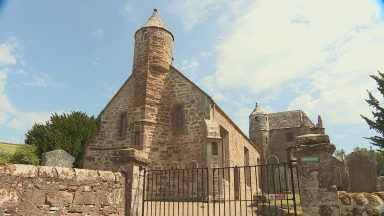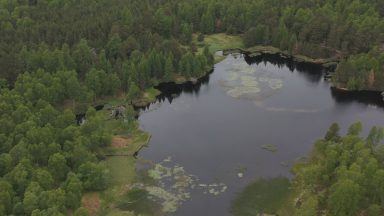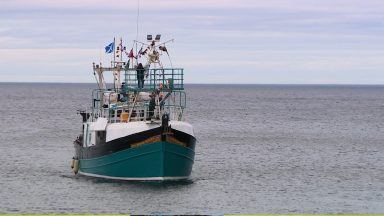Archaeologists have unearthed a Pictish site believed to be one of the largest ever discovered.
The settlement perched on the Tap O’ Noth hill near Rhynie in Aberdeenshire is among the most extensive examples of ancient life ever found in Scotland.
It encloses an area of around 17 acres and was constructed in the fifth to sixth centuries, holding up to 4000 people – a scale which experts thought was not reached until the 12th century north of the border.
Professor Gordon Noble, who led the University of Aberdeen research, said: “Over the last two years, we have been investigating the lower fort at Tap O’ Noth which is enclosed by a rampart that encircles the lower slopes of the hill.
“The results of the dating were simply incredible.
“They show that the huge fort dated to the fifth to sixth centuries CE and that it was occupied at the same time as the elite complex in the valley at Barflat farm.
‘The results of the dating were simply incredible.’
Professor Gordon Noble, University of Aberdeen
“Dating shows that settlement on the hill extended as far back to the third century, but both hut platforms excavated also had fifth to sixth century AD phases.”
The Picts were a confederation of Celtic-speaking communities who lived in the east and north of Scotland during the Late British Iron Age and Early Medieval periods.
Distribution of the buildings at the site suggests they are likely to have been built and occupied at a similar time as many are positioned alongside trackways or clustered together in groups.
Drone surveys also showed that in these groups was one notably larger hut, indicating there may have been some form of hierarchical organisation within the fort.

Evidence suggests up to 4000 people may have lived in more than 800 huts perched high on the hill, and scientists believe each would be occupied by four to five people.
Prof Noble added: “That’s verging on urban in scale and in a Pictish context we have nothing else that compares to this.
“We had previously assumed that you would need to get to around the 12th century in Scotland before settlements started to reach this size.
“We obviously need to do more to try and date more of the hut platforms given there are hundreds of them, but potentially we have a huge regional settlement with activity emerging in the Late Roman Iron Age and extending to the sixth century.
“It is truly mind-blowing and demonstrates just how much we still have to learn about settlement around the time that the early kingdoms of Pictland were being consolidated.”
Follow STV News on WhatsApp
Scan the QR code on your mobile device for all the latest news from around the country























